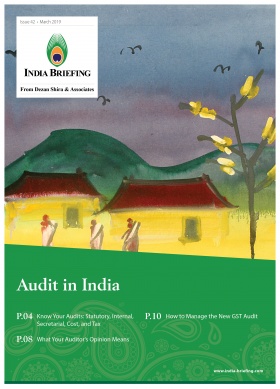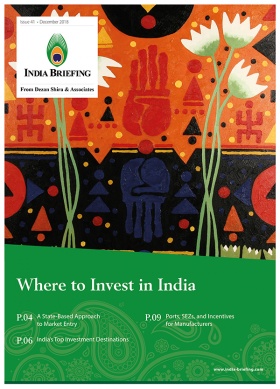Kolkata, India: A Brief Guide for Investors
Formerly known as Calcutta, the city of Kolkata was built along the bank of the Hugli River in northeastern India. The city is strategically positioned with three international frontiers – Bangladesh in the east, Nepal in the west, and Bhutan in the northeast.
Nicknamed ‘City of Joy’, Kolkata has a vibrant theatre and art scene, along with a rich cultural history and architecture. Six Noble laureates have been associated with the city, including economists Amartya Sen and Abhijit Banerjee.
Kolkata is the capital of West Bengal, a state rich in natural resources with a thriving tea production industry. The civic body, Kolkata Municipal Corporation, was established in 1876 and is responsible for city’s infrastructure, civic amenities, and administration. The city is also home to several special economic zones (SEZ) and IT parks.
Until 1911, Kolkata was the capital of the British Indian Empire, and served as a major port and commerce center. Though the city experienced a period of stagnation immediately after India’s independence in 1947, rising levels of education and state planning have brought Kolkata to the forefront again.
According to the 2011 Census, Kolkata is the seventh most populated city in the country. The city has a population of 4.5 million, and today, high-rise residences in the former European quarter tower over colonial-era government buildings.
Kolkata’s expanding economic profile
The current GDP (2017-18) of West Bengal is US$157 billion, with Kolkata being one of the biggest contributors to the state’s GDP. The state is the largest producer of rice and second largest producer of potatoes in India. Kolkata’s major industries cover a wide range of sectors, including information technology (IT), jute, leather, textiles, agriculture, metals and minerals, and tourism to name a few.
Kolkata is considered an important trade and commerce hub in northeast India. It has one of two major ports located in West Bengal, other being in Haldia. In 2018-19, the Kolkata handled 63.8 million tons of traffic (goods). The city is also the biggest tea handling port and tea auction market in the country.
With the locational advantage on its side, Kolkata has also emerged as one of the major warehousing and logistics markets in the country with deals worth millions of dollars in the pipeline. These projects are expected to be ready in the next 12 to 15 months.
Meanwhile, major industrial lobbies, such as the Federation of Indian Chambers of Commerce and Industry (FICCI), and the Confederation of Indian Industry (CII) established their regional offices in Kolkata years ago, a testament to the city’s diverse economic profile. Kolkata is also home to India’s second largest stock exchange, Calcutta Stock Exchange (CSE), which is over 100 years old.
Investment climate
West Bengal is ranked 10th on the ease of doing business ranking of states in India with Kolkata being one of the top performing cities in terms of GDP for the state. In comparison to other metropolitan cities, it is much less expensive to start a business in Kolkata. The city has become a favorite among foreign investors and companies as the FDI inflows have continued to increase. In 2018-19, the city received US$1.2 billion in FDI compared to US$218 million in 2017-18.
The city is also home to numerous internationally respected universities that supply a well-trained workforce to the area. Additionally, Kolkata is the only city in eastern India that has an international airport.
In 2019, several significant investments were announced to further boost Kolkata’s economic growth. PwC India announced an investment of INR 100 crores (US$14,114,920) to develop a Centre of Excellence (CoE) in artificial intelligence and an Internet of Things (IoT) lab in the city.
The World Bank is likely to invest US$300 million to develop multi-modal logistics infrastructure in Kolkata. In a 2018 report, the real estate consultant JLL estimated that an investment of INR 4,300 crore (US$606,94 million) is expected in warehousing and logistics in West Bengal.
A significant share of the country’s trade comes through Kolkata’s port. Its suburbs are fostering rapidly expanding IT and business process outsourcing (BPO) sectors.
Multinational companies (MNCs) that have a registered office in Kolkata include ITC Limited, Philips India, Tata Steel, Tata Global Beverages, Mcleod Russel India Ltd, Birla Corporation, and Britannia Industries, among others.
Small and medium-sized enterprises
Small and medium-sized enterprises account for a significant share of Kolkata’s economic activity and industrial output. The majority of the city’s business registration is related to micro and small enterprises, with medium and large-sized enterprises only making up a small portion of the total amount. Major industrial output in Kolkata is focused around leather garments and bags, apparel, hosiery, PVC cables, rod iron furniture, machinery and components, silicon products, electronics and insulated cables.
With easy availability of raw materials and skilled manpower, West Bengal is India’s leading exporter of finished leather goods. The state accounts for around 55 percent of the country’s exports of leather and leather products. Kolkata Leather Complex, at 1,100 acres, is India’s largest consolidated leather park. Intensifying trade relations with France in this area has bolstered the global brand image of Kolkata’s leather products.
The vast majority of Kolkata’s workforce, over 80 percent, is employed in the service industries. Industry and manufacturing make up around 15 percent of total employment and the primary sector including agriculture, and mining makes up less than one percent.
IT sector
Kolkata’s IT sector, though nowhere near the size of Bangalore, is nonetheless growing at a rapid pace. The state of West Bengal has placed a priority on expanding this sector, specifically looking at developing Kolkata’s surrounding suburbs, as well as second-tier cities in the state, such as Haldia, Durgapur, and Siliguri.
The IT industry has achieved significant growth in recent years, with major development areas being software development, hardware manufacturing, IT real estate, and IT-enabled services and IT security. This has attracted the likes of MNCs like IBM, Tata Consultancy Services, Siemens, Samsung, and Genpact. In its budget for 2018-19, the state government had allocated US$28.06 million for the development of the IT and electronics industry in West Bengal.
Development of financial services and banking, insurance, discrete and process manufacturing, as well as retail and distribution are expected to continue raising the city’s profile as an IT investment destination.
In 2018, the state government announced the Silicon Valley Hub project with an aim to attract more investment in the IT sector and to build a world-class ecosystem for cutting-edge technology. However, after an overwhelming response, the state government added another 100 acres to the existing 100 acres land earmarked for the project.
With the boom in this sector, the procedures to set up operations and invest in IT are constantly improving and being simplified. For example, the Webel support center is dedicated to supporting the operations of IT investors in West Bengal. Furthermore, the Webel center has implemented a number of e-governance solutions and has worked to expand quality Internet coverage throughout the city.
One of the central areas for Kolkata’s IT sector is Bidhannagar, commonly referred to as Salt Lake City. The Naba Diganta Industrial Township in this municipality has become a major hub for IT and related industries. The area is home to such companies as IBM, Deloitte, Sun Microsystems, and Siemens.
Financial hub
With Kolkata’s proximity to two international business centers in Asia – Hong Kong and Singapore, and the thriving IT sector, the state government predicts that the city will become a major financial center by 2030. The government quoted a study by the McKinsey Global Institute that said that Kolkata was “one of the top Indian cities emerging as the epicenter of global financial activities by 2030.”
Further, the state government is developing a financial hub in Rajarhat New Town, which is a planned satellite city of Kolkata, and 23 financial institutions as of early 2018 acquired plots to set up their operations in the area.
Some of the institutions the hub has already roped in include the State Bank of India, Bank of Baroda, Allahabad Bank, Union Bank of India, and state government institutions, namely the West Bengal Financial Corporation and the West Bengal Infrastructure Development Corporation.
In early 2019, the conglomerate ITC Limited, headquartered in Kolkata, announced a fresh investment of INR 1,700 crore (US$240,522,290) in the state of West Bengal. The company has also established an infotech park and ITC Green Center in Kolkata.
Biotechnology
West Bengal is deeply invested in developing the biotechnology industry in the state. The Kolkata Biotech Park provides space for start-ups and entrepreneurs to set up their biotech ventures. The park will offer biotech facilities, incubation and laboratory spaces, market access, guidance, and business support to these start-ups. The city hopes to use its geographical location, climate, bio-diversity, and availability of variety of crops to create a successful biotech sector in the city.
The government is already ramping up the infrastructure of the park, now spread over 45,000 square meters, to meet the needs and demands of these start-ups. The biotechnology department of the state government is also setting up a plant tissue laboratory at the park to enhance production and quality of vegetables and plants.
What makes Kolkata an attractive investment destination
Kolkata’s economy is growing at a fast pace partly due to the expansion of the IT sector and the expected investment worth US$300 million by World Bank to develop the infrastructure in and around the city.
With a combination of public and private investment in booming sectors like biotechnology and IT, Kolkata is expected to generate high revenue as well as create employment opportunities for its residents.
The significant increase in FDI inflows from US$218 million in 2017-18 to US$1.2 billion in 2018-19 is a sign that the city has emerged as an attractive investment destination for foreign investors.
India Briefing is produced by Dezan Shira & Associates. The firm assists foreign investors throughout Asia from offices across the world, including in Delhi and Mumbai. Readers may write to india@dezshira.com for business support in India.
- Previous Article Filing Late Tax Returns in India: Penalty and Deadline for AY 2019-20
- Next Article India’s Public Holidays in 2020







